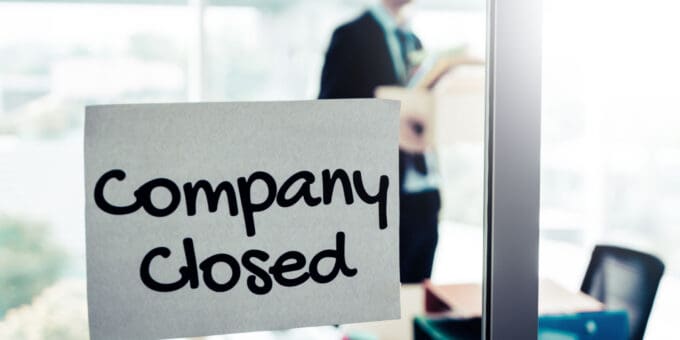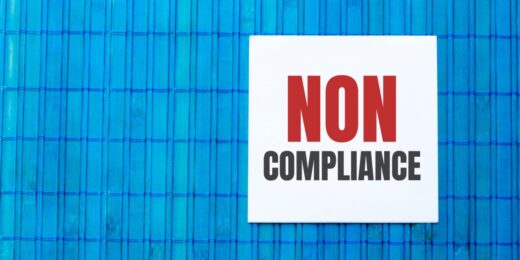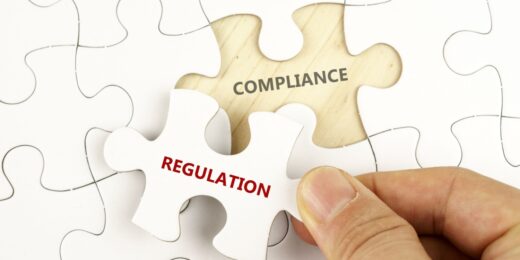Closing a company with debts to HMRC is not as straightforward as winding up a solvent company (i.e. one that does not owe money to any creditors). If your business is insolvent and owes money to HMRC, you must follow strict rules and procedures to avoid legal action or being personally liable for company debts.
Below, we discuss the options available if you plan to close a limited company in arrears with HMRC.
Key Takeaways
- You should settle debts with HMRC promptly to avoid personal liability and legal repercussions during company closure.
- Consider a Creditors’ Voluntary Liquidation to manage insolvency and protect directors from potential misconduct allegations.
- Speak to an insolvency practitioner to ensure compliance and proper asset management during the liquidation process.
If your limited company owes money to HMRC
If you are considering closing a company with debts to HMRC, you should be aware of a few things before making any decisions.
HMRC is a preferential ‘creditor’. This means that, upon liquidation, companies must pay HMRC before settling debts with their other creditors.
Sometimes, company directors and shareholders may be personally liable for the company’s debts. They can even face prosecution for their actions.
Regardless of how much money your company owes to HMRC, it is a serious situation you must handle correctly. It is important to seek professional advice and consider your options before taking action.
To give you a general idea, you have two options. You can settle the debts and then apply to Companies House to strike off and dissolve the company, or you can arrange a Creditors’ Voluntary Liquidation (CVL).
HMRC’s debt enforcement powers
If you ignore HMRC’s attempts to make contact or you refuse to pay your tax bill, HMRC may:
- visit you at your home or business address to understand your circumstances and work with you to settle the tax you owe
- appoint a debt collection agency to discuss settling your tax debt
HMRC also has debt enforcement powers that it may utilise as a last resort. These include:
- taking your business assets to cover the debt
- using a Summary Warrant to recover the debt (Scotland only)
- recovering the debt directly from your business bank account
- recovering the debt through county court proceedings and property
- third-party debt orders (i.e. taking direct payment from someone who owes money to your company
As a final course of action, HMRC can force a company into compulsory liquidation via a winding-up petition. This is a more serious scenario that involves the courts, so it is best to avoid it at all costs.
Option 1: Settle HMRC debts before applying to strike off
If your company owes money to HMRC, the easiest solution is to contact HMRC immediately and pay off the debt as quickly as possible. You may be able to set up a payment plan, called a ‘Time to Pay’ arrangement. This would enable you to settle the debt over an agreed period.
HMRC is incredibly strict about debt collection. However, they are generally very accommodating of such arrangements because a payment plan is often the quickest and most cost-effective way to recover debt.
When your company has settled its debts to HMRC (and any other creditors), you can formally apply to Companies House to strike off and dissolve your limited company.
Within 7 days of doing so, you must send a copy of the completed ‘Striking off application by a company’ (form DS01) to HMRC and all other interested parties who may be affected by the company’s closure.
Option 2: Arrange a Creditors’ Voluntary Liquidation (CVL)
If you wish to close a company with debts to HMRC but you’re unable to settle those debts immediately or set up a Time to Pay arrangement, you can propose a Creditors’ Voluntary Liquidation (CVL) instead.
A CVL is a formal insolvency procedure whereby you involve your creditors, appoint an authorised insolvency practitioner to take charge of the liquidation process, and use the proceeds from the sale of company assets to pay off the debts.
If any outstanding debts remain after the realisation of business assets, they will be written off—except secured debts or where the directors or shareholders have provided personal guarantees to a lender.
At the end of the CVL process, the company will be formally closed and struck off (removed from) the register at Companies House.
Entering into a Creditors’ Voluntary Liquidation can reduce the risk of serious allegations being made against directors—such as misconduct, fraud, or wrongful trading.
Therefore, assuming no wrongdoing has occurred and you have not provided a personal guarantee for any business debts, a CVL will allow you to lawfully close down your company without significant worry of facing personal liability or director disqualification.
If you are an employee of the company when entering into liquidation, you may also be eligible to claim redundancy pay from the business.
How to arrange a CVL
To arrange a Creditors’ Voluntary Liquidation for an insolvent company, the following steps are required:
Step 1
Call a general meeting of the members (shareholders) and ask them to pass a special resolution approving a CVL to wind up the company. This resolution will state that the company cannot continue in business because of its liabilities and that it is advisable to wind up.
At least 75% of shareholders’ votes must be in favour of winding up the company to pass a special resolution.
Step 2
Appoint an authorised insolvency practitioner as a liquidator to take control of the company. They will oversee the liquidation process and wind up the business in accordance with the statutory requirements. You can find a licensed insolvency practitioner online.
Step 3
Advertise the special resolution in The Gazette within 15 days of being passed by the members. Depending on the company’s jurisdiction of incorporation, the advertisement will be placed in either The London Gazette, The Edinburgh Gazette, or The Belfast Gazette.
Step 4
Send a copy of the resolution to Companies House within 15 days of the members’ passing the special resolution.
The role of the insolvency practitioner
Once the insolvency practitioner has been appointed as a liquidator, the directors no longer control the company or anything it owns. They are not permitted to act for or on behalf of the business from that point onward.
The insolvency practitioner is in charge, acting in the interest of the company’s creditors rather than its directors and shareholders. Upon commencing the liquidation process, the liquidator will:
- settle any outstanding contract or legal disputes
- arrange the sale of company assets and use the proceeds to pay creditors
- communicate with all relevant parties, keeping creditors informed and involving them in decisions (where necessary)
- meet deadlines for any filings due while they are in charge, and keep relevant authorities informed
- pay liquidation costs and the company’s final VAT bill (if applicable)
- make the necessary payments to creditors in accordance with a designated order of priority
To establish and report on what went wrong in the company, the insolvency practitioner will also interview the directors and investigate their actions in the period leading up to insolvency. They will seek evidence that the directors acted in the best interests of the company’s creditors at all times.
The liquidator will then prepare a final set of accounts and apply to Companies House to strike the company off the register. When struck off, the company ceases to exist.
Can I claim redundancy as a company director?
Many company directors are also classed as employees, receiving a regular salary for their work. In such instances, directors may qualify for redundancy payments when a company enters into a Creditors’ Voluntary Liquidation.
Ordinarily, companies are responsible for covering any redundancy payments they owe. However, this is not possible for an insolvent company. In such instances, redundancy payments to employees and directors may be available from the Redundancy Payments Service.
Can I voluntarily strike off a company with debts?
Unfortunately, the voluntary strike-off method of company dissolution is not an option for insolvent companies.
If you were to apply to Companies House to strike off your company before paying off its debts, HMRC would formally object as a ‘creditor’ of the business.
Attempting to avoid paying your tax arrears can have serious repercussions. The company directors would be investigated by the Insolvency Service and likely face director disqualification for up to 15 years.
In some cases, they may be personally liable for some or all of the company’s debts to HMRC and other creditors.
Thanks for reading
If your company is in tax arrears, you should contact HMRC as soon as possible to discuss your options. You may be able to set up a payment plan and pay off the debt over time.
However, if your company is experiencing financial difficulties and you wish to close down the business, you should seek professional help and advice immediately.
Business Debtline offers practical help for small business owners. However, you may find it is time to consult an insolvency expert for specialist advice on closing a company with debts to HMRC.
Please note that the information provided in this article is for general informational purposes only and does not constitute legal, tax, or professional advice. While our aim is that the content is accurate and up to date, it should not be relied upon as a substitute for tailored advice from qualified professionals. We strongly recommend that you seek independent legal and tax advice specific to your circumstances before acting on any information contained in this article. We accept no responsibility or liability for any loss or damage that may result from your reliance on the information provided in this article. Use of the information contained in this article is entirely at your own risk.














Join The Discussion
Comments (2)
How much do you charge for a CVL?
Thank you for your kind enquiry, Yaseen.
Unfortunately we do not provide services relating to a Creditors Voluntary Liquidation. We would recommend looking at this page for more information on the next steps required: https://www.gov.uk/liquidate-your-company/creditors-voluntary-liquidation
We trust this information is of use to you.
Kind regards,
The Rapid Formations Team